
Do you have a question about the Daikin VRV RXYQ72AATJ Series and is the answer not in the manual?
| Series | VRV |
|---|---|
| Model | RXYQ72AATJ |
| Refrigerant | R410A |
| Outdoor Unit Weight | 97 kg |
| Operating Temperature (Cooling) | -5°C to 46°C |
| Outdoor Unit Noise Level | 54 dB(A) |
General precautions for safe installation and operation of the unit.
Explains the meaning of DANGER, WARNING, CAUTION, and NOTE symbols used in the manual.
Installer's responsibility to comply with national and local codes for product installation.
General system info and manual scope.
Allowed unit combinations and indoor capacity ranges.
Lists accessories included with the unit and their storage locations.
Instructions on how to open the unit's front panels and access the control box.
Key requirements for selecting an installation site, including foundation, flatness, and space.
Considerations for installation based on weather conditions like wind and water drainage.
Guidelines for installing units in areas with heavy snowfall and low ambient temperatures.
Provides detailed dimensions and foundation bolt hole specifications for various RXYQ-A models.
Specifies minimum clearances required around the unit for servicing and air circulation.
Emphasizes keeping the system clean, dry, and tight for R410A refrigerant.
Details on selecting correct gas and liquid pipe sizes based on unit capacity and connection types.
Defines maximum allowable pipe lengths, height differences, and branching restrictions.
Procedures for inspecting the unit upon delivery and handling it with care to prevent damage.
Steps for safely removing the unit from its packaging and checking accessories.
Strict cautions for R410A system cleanliness, dryness, and tightness, including brazing.
Procedures for connecting gas and liquid refrigerant piping to the outdoor unit, including front/side connections.
Guidelines and cautions for handling stop valves, including tightening torques and service port usage.
Details on power circuit, safety devices, cable requirements, and voltage specifications.
Wiring connection examples and procedures, including transmission and power connections.
Lists essential tools required for air tight testing and vacuum drying procedures.
Steps to pressurize and check the system for leaks using nitrogen gas.
Process for evacuating the system to remove moisture and air to a specific vacuum level.
Provides guidelines on pipe insulation thickness and material types for HVAC equipment.
Checks for proper transmission wiring, power wiring, and insulation resistance.
Verification of correct piping size, insulation, and refrigerant piping integrity.
Instructions on how to access the printed circuit board for making settings.
Details on operating push buttons and DIP switches to configure system settings and modes.
Instructions for connecting an optional PC configurator for system setup and configuration.
Critical safety precautions and methods for calculating refrigerant charge.
Step-by-step procedures for both automatic and manual refrigerant charging methods.
Procedure for fine-tuning refrigerant charge based on subcooling for optimal performance.
Essential checks before initial unit start-up, including installation, wiring, and power.
How to monitor unit status, configure field settings, and interpret error codes.
Procedures for verifying correct system operation after installation and settings.
Instructions for starting the system after installation and test operation.
Guidelines for regular checks and inspections to ensure optimal unit performance.
Safety precautions when performing service, especially on inverter equipment and electrical parts.
Procedures for using service mode for refrigerant recovery or vacuuming operations.
Emphasizes safety against leakage according to local regulations and R410A characteristics.
Explains how to calculate and manage maximum refrigerant concentration in occupied spaces.
Regulations for dismantling the unit and treating refrigerants, oils, and other parts.
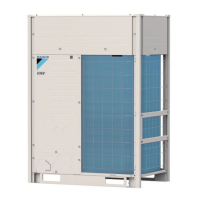

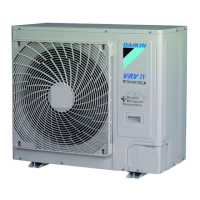




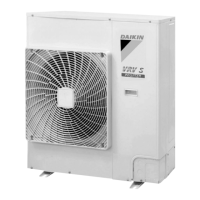


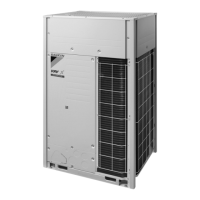
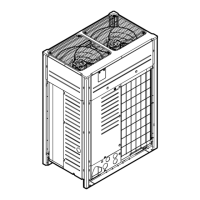
